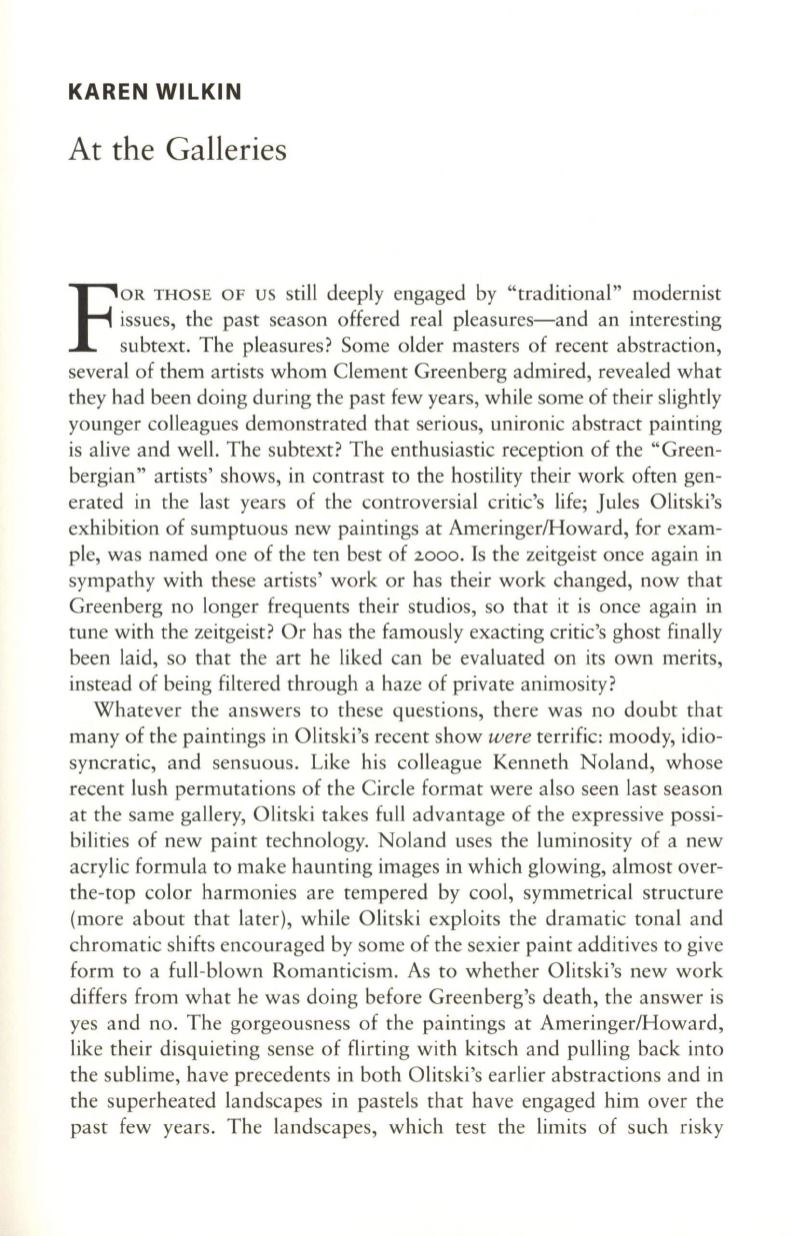
KAREN WILKIN
At the Galleries
F
OR THOSE OF US
still deeply engaged by "traditional" modernist
issues, the past season offered real pleasures-and an interesting
subtext. The pleasures? Some older masters of recent abstraction,
several of them artists whom Clement Greenberg admired, revealed what
they had been doing during the past few years, while some of their slightly
younger colleagues demonstrated that serious, unironic abstract painting
is alive and well. The subtext? The enthusiastic reception of the "Green–
bergian" artists' shows, in contrast to the hostility their work often gen–
erated in the last years of the controversial critic's life; Jules Olitski's
exhibition of sumptuous new paintings at AmeringerlHoward, for exam–
ple, was named one of the ten best of
2000.
Is the zeitgeist once again in
sympathy with these artists' work or has their work changed, now that
Greenberg no longer frequents their studios, so that it is once again in
tune with the zeitgeist? Or has the famously exacting critic's ghost finally
been laid, so that the art he liked can be evaluated on its own merits,
instead of being filtered through a haze of private animosity?
Whatever the answers to these questions, there was no doubt that
many of the paintings in Olitski's recent show
were
terrific: moody, idio–
syncratic, and sensuous. Like his colleague Kenneth Noland, whose
recent lush permutations of the Circle format were also seen last season
at the same gallery, Olitski takes full advantage of the expressive possi–
bilities of new paint technology. Noland uses the luminosity of a new
acrylic formula to make haunting images in which glowing, almost over–
the-top color harmonies are tempered by cool, symmetrical structure
(more about that later), while Olitski exploits the dramatic tonal and
chromatic shifts encouraged by some of the sexier paint additives to give
form to a full-blown Romanticism. As to whether Olitski's new work
differs from what he was doing before Greenberg'S death, the answer is
yes and no. The gorgeousness of the paintings at AmeringeriHoward,
like their disquieting sense of flirting with kitsch and pulling back into
the sublime, have precedents in both Olitski's earlier abstractions and in
the superheated landscapes in pastels that have engaged him over the
past few years. The landscapes, which test the limits of such risky


